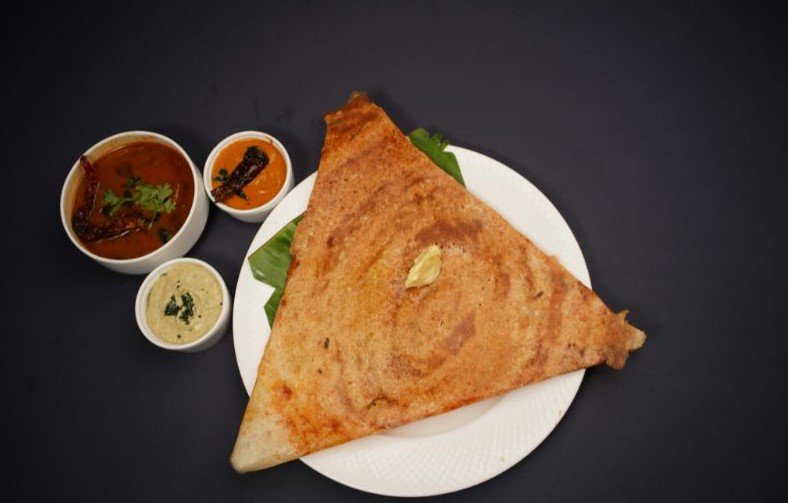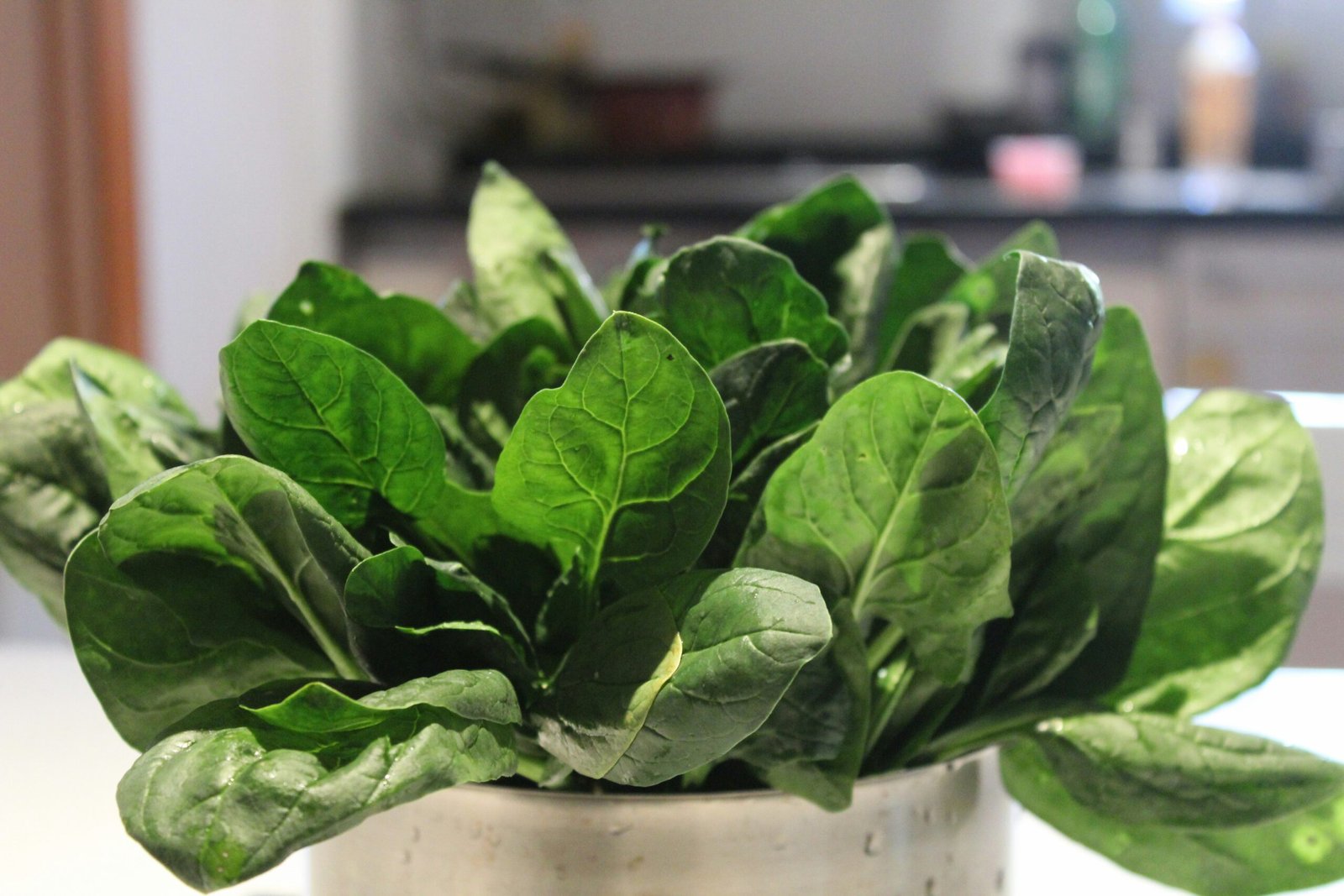Introduction to Dosa
Dosa is a traditional Indian dish, celebrated especially in the southern regions of the country, known for its distinctive flavor and unique texture. Originating from ancient Tamil cuisine, dosa has evolved over the centuries, becoming a staple food item that has transcended regional boundaries and gained immense popularity across India and beyond. The dish is primarily made from fermented rice and lentils, lending it both nutritional value and a rich, tangy taste. The cultural significance of dosa cannot be overstated; it is often served as a breakfast item but can be enjoyed at any meal. In many households, making dosa is a ritual that embodies warmth, hospitality, and tradition.
The versatility of dosa is one of its most appealing aspects. There are numerous varieties, each reflecting distinct flavors and ingredients. Classic plain dosa, known for its crispy edge and soft interior, is perhaps the most common. However, variations such as masala dosa, which is stuffed with a spiced potato filling, and rava dosa, made from semolina, showcase the breadth of this dish. Additionally, there are fusion versions, incorporating local ingredients and dynamic flavors to cater to modern palates.
To prepare dosa, the primary ingredients include rice, urad dal (black gram), and spices. The components are soaked, ground into a batter, and allowed to ferment, a process that enhances flavor and digestibility. Traditional cooking methods involve using a hot griddle called a tawa, where the batter is spread thinly and cooked until golden brown. The delectable aroma and satisfying crunch of a freshly made dosa make it a dish worth trying in your own kitchen. Therefore, engaging with this culinary tradition is not only about making food; it is also about connecting with India’s rich heritage.
Ingredients and Equipment Needed
To prepare dosa at home, it is essential to gather the right ingredients and equipment. The primary component of dosa batter is rice, typically using either short-grain or medium-grain rice. A common choice for this dish is parboiled rice, which lends a fluffy texture to the dosa. Along with rice, urad dal, also known as black gram, is crucial for creating a well-balanced batter. The general ratio of rice to urad dal is about 3:1; however, this might be adjusted based on personal preference.
In addition to the rice and urad dal, various spices can be added to enhance the flavor. Common options include cumin seeds, which impart a subtle earthiness, and a pinch of salt to enhance taste. While not mandatory, incorporating fermented ingredients such as a small amount of cooked rice or even fenugreek seeds can aid in the fermentation process, resulting in a lighter and more flavorful dosa.
Aside from the essential ingredients, some optional items can be introduced for variations, like using different types of flour such as millet or quinoa flour to create gluten-free alternatives. Including vegetables like grated carrots or finely chopped spinach can also add nutritional value and unique flavors to your dosa. Experimentation with these ingredients is encouraged.
Equipping your kitchen with the right tools is equally important for dosa preparation. A wet grinder or a high-powered blender is ideal for thoroughly grinding the rice and urad dal into a smooth batter. Mixing bowls that can accommodate sufficient volume are also necessary. Finally, a non-stick skillet or a dedicated dosa pan is required for cooking the dosas, ensuring they do not stick and can be flipped easily. With the right ingredients and equipment, you are well-prepared to embark on your journey of making delicious dosas at home.
Step-by-Step Cooking Process
To make dosa at home, the process begins with the preparation of the batter, which is essential for achieving the perfect dosa. Start by measuring one cup of rice and a quarter cup of split urad dal (black gram). Rinse both ingredients thoroughly under running water. This step helps remove excess starch and ensures a cleaner taste.
Next, soak the rice and urad dal separately in ample water for at least six hours, or overnight for optimal results. Soaking softens the grains, which is crucial for the grinding process that follows. Once the soaking time is complete, drain the water and combine the rice and dal in a blender with a little fresh water. Grind the mixture until you obtain a smooth, thick batter, ensuring that it is not too watery. The consistency of the batter is key; it should be thicker than pancake batter to yield the ideal dosa.
After grinding, transfer the batter to a large bowl and cover it loosely with a cloth. Allow it to ferment in a warm place for approximately 12 to 24 hours. Fermentation not only enhances the flavor but also contributes to the characteristic texture of the dosa. Post-fermentation, you will notice a rise in the batter, indicating that the fermentation has been successful.
To cook the dosa, start by heating a non-stick skillet or a cast-iron tava over medium heat. Lightly grease the surface with oil. Once hot, ladle a portion of the batter onto the skillet, and spread it out in a circular motion to form a thin, even layer. The thickness can be adjusted based on personal preference—thinner dosas yield a crispier texture, while thicker versions are soft.
Cook for about two minutes or until the edges begin to lift and the surface looks set. Drizzle a little oil around the edges, and if desired, flip the dosa to cook the other side for an additional minute. Serve hot with chutney or sambar, enjoying the perfect dosa created from your hands-on efforts.
Serving Suggestions and Variations
When it comes to enjoying dosa, the possibilities are vast and diverse. This traditional South Indian dish lends itself beautifully to a variety of accompaniments and fillings, enhancing both taste and presentation. One of the most popular ways to serve dosa is alongside sambar, a flavorful lentil soup enriched with assorted vegetables and spices. Sambar not only complements the crispy texture of the dosa but also adds a nutritious element to the meal. For those who prefer a creamy option, coconut chutney is an ideal pairing. Made from freshly grated coconut, green chilies, and tempered spices, this chutney balances the savory notes of dosa with its refreshing taste.
An alternative to coconut chutney is tomato chutney, which offers a tangy punch. This chutney is often made with roasted tomatoes, onions, and a touch of spices, presenting a delightful contrast to the dosa’s texture. Each of these accompaniments not only enhances the flavors but also makes the experience of eating dosa more enjoyable and varied.
In addition to these traditional pairings, there are several variations of dosa that one might find intriguing. One such option is masala dosa, filled with a spiced potato mixture, providing a heartier meal. For a lighter twist, rava dosa can be a fantastic choice. Made from semolina, this variation has a crisp texture and can be paired with the same chutneys and sambar for a delightful experience.
Ultimately, experimenting with different combinations of chutneys and dosa styles can elevate your dining experience. Encouraging creativity in the kitchen, serving dosa can be as simple or elaborate as one desires. Whether enjoying a basic dosa with a single condiment or exploring various fillings and sides, there is no end to how one can savor this versatile dish.


